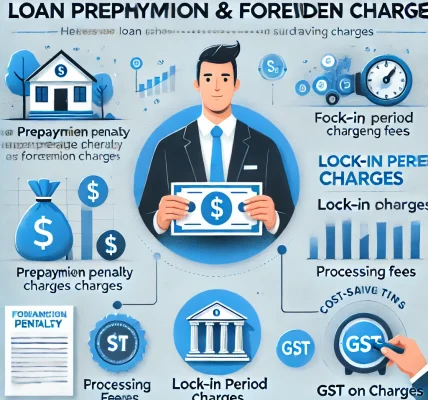Introduction
Applying for a loan can be an essential step toward achieving personal and financial goals, whether it’s purchasing a home, starting a business, or covering an emergency expense. However, before a bank approves a loan, it carefully evaluates the applicant’s eligibility based on multiple factors. Understanding these factors can help borrowers prepare in advance, improving their chances of securing a loan with favorable terms.
In this guide, we’ll explore the key factors banks consider when assessing loan eligibility and provide practical tips to enhance your approval prospects.
1. Credit Score and Credit History
Your credit score is one of the most critical factors in determining loan eligibility. Banks use this score to assess your creditworthiness and repayment history.
✅ What Banks Look For:
- A high credit score (usually 700 or above) increases approval chances.
- A history of timely payments on previous loans and credit cards.
- Low outstanding debt and responsible credit utilization.
✅ How to Improve:
- Pay all EMIs and credit card bills on time.
- Avoid multiple loan applications within a short period.
- Regularly check your credit report for errors and rectify them.
2. Income and Employment Stability
Banks evaluate your income source and job stability to ensure you can afford the loan repayments.
✅ What Banks Look For:
- A stable job with a consistent income.
- Higher income levels for larger loan amounts.
- Salaried individuals with at least two years of work experience.
- Self-employed individuals with steady business earnings and financial records.
✅ How to Improve:
- Maintain stable employment before applying for a loan.
- Keep records of your income, especially if self-employed.
- Provide additional income sources if available.
3. Debt-to-Income Ratio (DTI)
Your debt-to-income (DTI) ratio is the percentage of your monthly income that goes toward repaying debts. A high DTI can indicate financial stress, reducing your loan eligibility.
✅ What Banks Look For:
- DTI below 40% is considered favorable.
- Lower existing loan obligations.
- A balance between income and existing debt payments.
✅ How to Improve:
- Pay off existing debts before applying for a new loan.
- Avoid taking multiple loans simultaneously.
- Increase your income to improve DTI.
4. Loan Amount and Repayment Capacity
Banks assess whether you can comfortably repay the loan amount you’re requesting.
✅ What Banks Look For:
- Monthly income sufficient to cover EMI payments.
- A reasonable loan amount relative to income.
- No history of loan defaults.
✅ How to Improve:
- Use loan EMI calculators to determine a feasible loan amount.
- Choose a repayment tenure that keeps EMIs manageable.
- Consider providing a co-applicant to strengthen eligibility.
5. Type and Purpose of Loan
Different loan types (personal, home, business, or auto loans) have varying eligibility criteria.
✅ What Banks Look For:
- The necessity and purpose of the loan.
- Whether the loan fits within their lending policies.
- Property or collateral details (for secured loans).
✅ How to Improve:
- Choose the right loan type that matches your financial needs.
- Ensure you meet the specific requirements for that loan category.
- For secured loans, maintain proper documentation of collateral.
6. Collateral or Security (For Secured Loans)
For secured loans like home or car loans, banks may require collateral to minimize their risk.
✅ What Banks Look For:
- Property or assets that can be pledged as security.
- Proper valuation and legal documentation of collateral.
- Asset ownership and market value.
✅ How to Improve:
- Ensure collateral is legally clear and properly valued.
- Keep documentation updated.
- Choose a lender that offers reasonable loan-to-value ratios.
7. Relationship with the Bank
Existing customers with a good banking history often receive preferential treatment when applying for loans.
✅ What Banks Look For:
- Long-term banking relationship.
- Healthy transaction history.
- Previous loans repaid on time.
✅ How to Improve:
- Maintain an active savings or salary account.
- Build a good banking history with regular transactions.
- Use bank products like fixed deposits or credit cards responsibly.
8. Loan Repayment Tenure
Banks evaluate your chosen repayment tenure to ensure affordability and risk management.
✅ What Banks Look For:
- Shorter tenures indicate faster repayment and lower risk.
- Longer tenures mean lower monthly EMIs but higher interest payments.
✅ How to Improve:
- Select a tenure that balances affordability and total interest cost.
- Ensure the tenure aligns with your financial goals.
- Opt for prepayment options if feasible.
Conclusion
Understanding how banks assess loan eligibility can help you take proactive steps to improve your approval chances. By maintaining a good credit score, stable income, low debt levels, and a strong banking relationship, you can secure a loan with better terms and interest rates.



